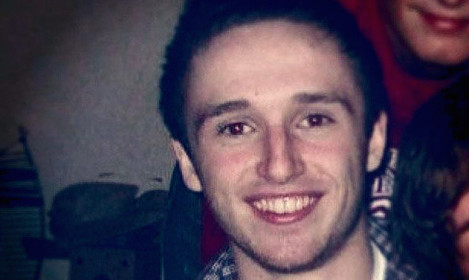
Tragic teenager David O’Halloran had high levels of a date rape drug in his system when he died, according to new toxicology tests.
It’s led to fresh speculation foul play contributed to the Stirling University student’s death and calls for a new police probe.
The 18-year-old, a Maths and Education student, had been returning to campus after a January night out when he vanished.
CCTV footage showed him staggering along a street more than a mile from his halls of residence.
His disappearance sparked a frantic search that lasted three months.
At the time police said the teenager was drunk and suffered hypothermia as he attempted to find his way home.
But his distraught mum, Donna, always maintained her son’s drinks were spiked.
Now, toxicology tests carried out by Glasgow University have bolstered her belief that a third party was to blame for the tragedy.
The report, carried out by the Section for Forensic Medicine and Science, found high levels of date rape drug GHB in his system.
Last night Donna, 41, said: “In my opinion David’s drinks were spiked.
“I have always said there is no other explanation. He was not a drug user. He did not take drugs.
“David loved himself too much to take drugs.
“He loved his sports, he loved looking after his body. Drugs just weren’t his thing.”
She added: “If this is the case, then someone out there is guilty of manslaughter. The police have to look at this again, or we should have a Fatal Accident Inquiry.”
During the search for David, Donna spent weeks trawling the River Forth in a dinghy and searching through woods for signs of his body. He was eventually found dead in a field near woodland by a farmer, more than two miles from the university campus.
Puzzled mum Donna demanded independent scientific tests, fearing her son’s odd behaviour could only be explained by a spiked drink.
Experts took three samples of blood, two urine samples, cuts of his hair and carried out liver tests on David’s body. The tests revealed he had about 1.5 times the legal drink drive limit of alcohol.
He also had 30 times more acetone a substance produced naturally but also found in solvents such as paint stripper in his body than normal healthy adults.
The pathologist found GHB in his urine and his hair, with the report also stating the levels of the substance in his blood were on a par with other fatalities involving the drug.
The student had 100mg/L of GHB in his blood more than 100 times higher than produced within the body in normal adults and a higher reading of 189mg/L in his chest fluid.
But the forensic team was unable to conclude whether this was as a result of taking the drug himself recreationally, or it having been put in a drink.
A separate post-mortem report by NHS Lothian concluded the cause of death was “unascertained” and said the theory David died of exposure is “somewhat speculative”.
Last night Police Scotland said they were seeking “further tests”.
A spokeswoman said: “Our inquiries are on-going to establish where the GHB came from and we are seeking further expert opinion.
“More tests are being carried out and we are not able to comment further.”

Enjoy the convenience of having The Sunday Post delivered as a digital ePaper straight to your smartphone, tablet or computer.
Subscribe for only £5.49 a month and enjoy all the benefits of the printed paper as a digital replica.
Subscribe